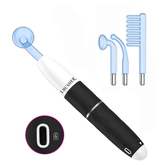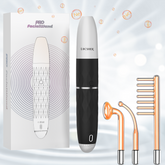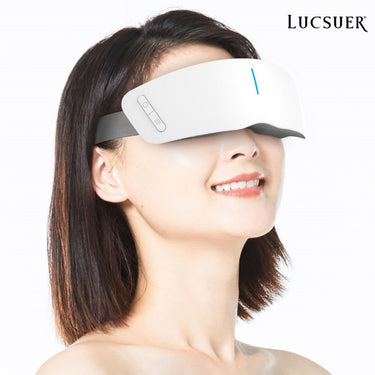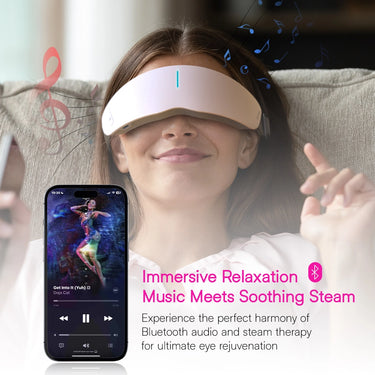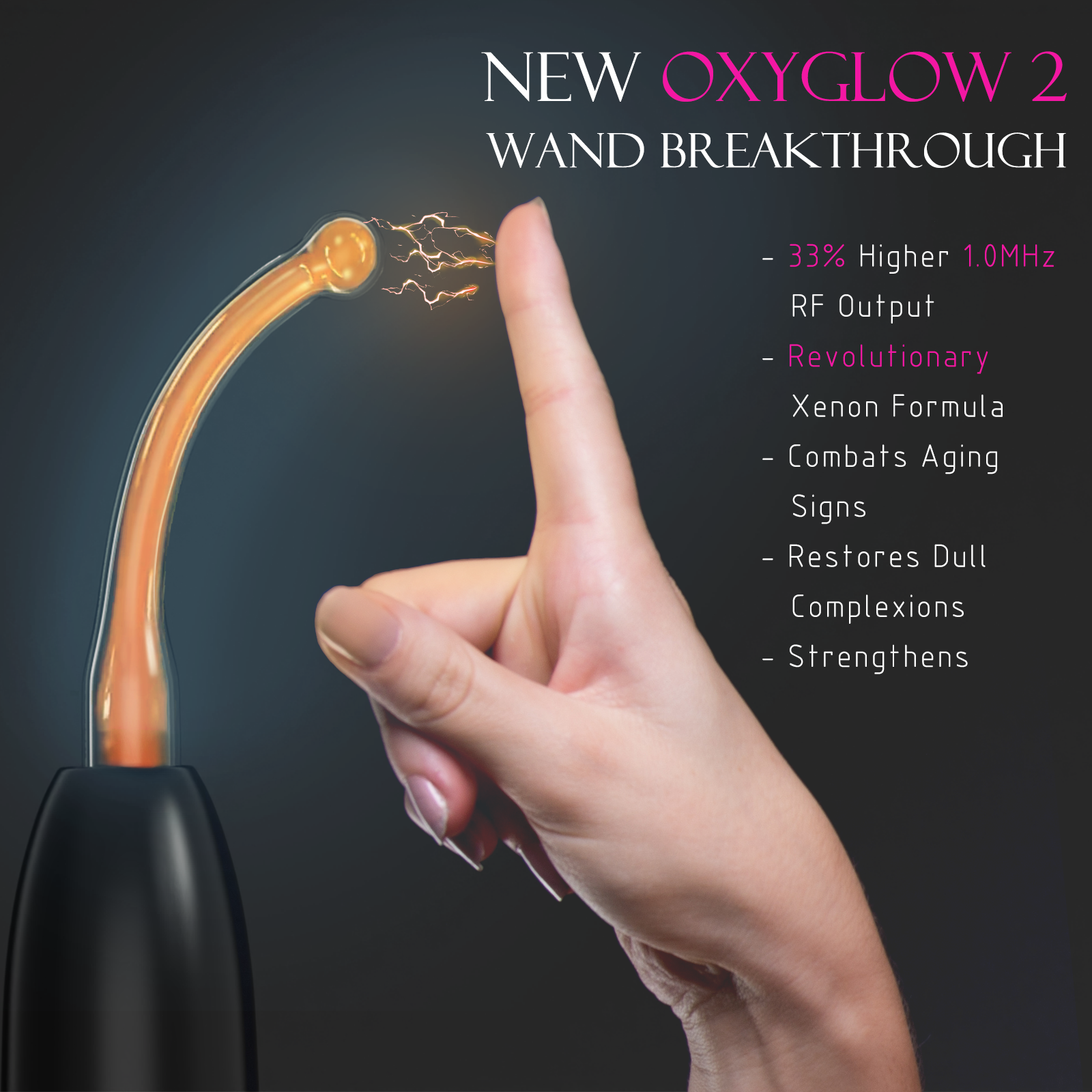Introduction
La quête d'une peau radieuse et jeune a suscité un regain d'intérêt pour les traitements de beauté innovants à domicile, et les appareils de luminothérapie rouge (RLT) sont devenus une option populaire. Alors que les amateurs de soins de la peau et les défenseurs du bien-être explorent de nouvelles façons de rajeunir leur teint et d'améliorer leur bien-être général, la question de savoir si l'investissement dans ces appareils en vaut la peine se pose souvent. Dans cette analyse complète, nous allons nous pencher sur la science derrière la luminothérapie rouge, évaluer ses avantages, explorer les coûts impliqués et fournir des informations pour vous aider à prendre une décision éclairée.
1. Comprendre la thérapie par la lumière rouge
1.1 Qu’est-ce que la thérapie par lumière rouge ?
La luminothérapie rouge, également connue sous le nom de photobiomodulation ou de luminothérapie à faible intensité (LLLT), est un traitement non invasif qui utilise des longueurs d'onde spécifiques de lumière rouge et proche infrarouge pour stimuler les processus cellulaires de la peau et du corps. Les origines de cette thérapie remontent aux recherches de la NASA sur l'utilisation de lumières LED pour favoriser la croissance des plantes dans l'espace, qui ont ensuite conduit à des découvertes sur ses avantages potentiels pour la réparation et la régénération des tissus humains.
Aujourd'hui, la luminothérapie rouge est largement utilisée dans divers domaines, notamment les soins de la peau, la gestion de la douleur et la cicatrisation des plaies. Elle a gagné en popularité en tant que traitement à domicile en raison de la disponibilité d'appareils conviviaux qui exploitent la puissance de la technologie LED.
1.2 Comment fonctionnent les appareils de luminothérapie rouge
Les appareils de luminothérapie rouge émettent une lumière de faible intensité dans les longueurs d'onde du rouge et du proche infrarouge, généralement comprises entre 630 et 850 nanomètres (nm). Ces longueurs d'onde spécifiques sont capables de pénétrer la surface de la peau et d'atteindre des couches plus profondes, où elles interagissent avec des composants cellulaires appelés chromophores.
L'interaction entre la lumière et ces chromophores déclenche une cascade de processus biologiques, dont une augmentation de la production d'adénosine triphosphate (ATP), la monnaie énergétique des cellules. Ce regain d'énergie améliore la fonction cellulaire, favorise la réparation des tissus et stimule la production de collagène et d'élastine, les protéines responsables de l'élasticité et de la fermeté de la peau.
2. Évaluation des avantages des appareils de luminothérapie rouge
2.1 Santé de la peau et anti-âge
L’un des avantages les plus largement reconnus de la luminothérapie rouge est son potentiel à améliorer la santé de la peau et à lutter contre les signes du vieillissement. Des études cliniques ont montré que l’utilisation régulière d’appareils de luminothérapie rouge peut stimuler la production de collagène, réduire l’apparence des ridules et des rides et améliorer la texture et l’élasticité de la peau.
La production accrue de collagène déclenchée par la luminothérapie rouge contribue à repulper et à raffermir la peau, diminuant ainsi l'apparence des rides et créant un teint plus jeune. De plus, il a été démontré que la thérapie améliore la circulation sanguine, favorisant un meilleur apport de nutriments aux cellules de la peau et améliorant l'éclat général de la peau.
2.2 Traitement de l'acné et cicatrisation de la peau
La luminothérapie rouge a également montré des résultats prometteurs dans le traitement de l’acné et dans la promotion d’une guérison plus rapide de diverses affections cutanées. Les propriétés anti-inflammatoires de la lumière rouge peuvent aider à réduire les rougeurs et l’inflammation associées à l’acné, tandis que sa capacité à stimuler la régénération cellulaire peut aider au processus de guérison des imperfections et des cicatrices.
De plus, il a été démontré que la luminothérapie rouge a des effets antimicrobiens, aidant potentiellement à contrôler la croissance des bactéries responsables de l’acné sur la peau. Des études dermatologiques ont montré que l’association de la luminothérapie rouge à d’autres traitements contre l’acné peut améliorer leur efficacité et améliorer la clarté globale de la peau.
2.3 Soulagement de la douleur et récupération musculaire
Au-delà de ses bienfaits pour la peau, la luminothérapie rouge est reconnue pour son potentiel à soulager la douleur chronique et à favoriser la récupération musculaire. La capacité de la thérapie à augmenter le flux sanguin, à réduire l'inflammation et à stimuler la réparation des tissus en fait un outil précieux pour les personnes souffrant de maladies telles que l'arthrite, les tensions musculaires et les blessures sportives.
Des recherches cliniques ont montré que la luminothérapie rouge peut réduire efficacement la douleur et améliorer la mobilité chez les patients souffrant de divers troubles musculo-squelettiques. De plus, les athlètes et les amateurs de fitness ont signalé des temps de récupération plus rapides et une réduction des douleurs musculaires après avoir intégré la luminothérapie rouge dans leurs routines post-entraînement.
2.4 Amélioration de l'humeur et des fonctions cognitives
Bien que les preuves soient encore en cours d’élaboration, certaines études suggèrent que la luminothérapie rouge peut également avoir un impact positif sur l’humeur et les fonctions cognitives. Les chercheurs ont exploré le potentiel de la luminothérapie rouge pour soulager les symptômes de maladies telles que la dépression, le trouble affectif saisonnier (TAS) et même pour améliorer les performances cognitives et la mémoire.
Les mécanismes proposés à l’origine de ces bienfaits impliquent la capacité de la lumière rouge à stimuler la production de neurotransmetteurs spécifiques et à améliorer le flux sanguin cérébral. Cependant, des recherches supplémentaires sont nécessaires pour comprendre pleinement l’étendue et les applications de ces bienfaits potentiels.
3. Considérations relatives aux coûts et aux investissements
3.1 Coûts d’achat initiaux
Lorsque vous envisagez d’investir dans un appareil de luminothérapie rouge pour une utilisation à domicile, l’un des principaux facteurs à évaluer est le coût d’achat initial. Les prix de ces appareils peuvent varier considérablement en fonction du type, de la taille et des fonctionnalités.
Les appareils portables d'entrée de gamme ou les petits panneaux peuvent coûter entre 50 et 300 dollars, tandis que les panneaux plus grands pour tout le corps peuvent coûter entre 500 et 2 000 dollars, voire plus. Il est important de noter que si les traitements professionnels en cabinet peuvent être plus chers par séance, les appareils à domicile peuvent constituer une solution plus rentable à long terme, en particulier pour ceux qui recherchent un traitement régulier.
3.2 Valeur à long terme
Lors de l'évaluation de l'investissement dans un appareil de luminothérapie rouge, il est essentiel de prendre en compte sa valeur à long terme. Les appareils de haute qualité sont conçus pour durer plusieurs années avec un entretien et une maintenance appropriés. De plus, la fréquence d'utilisation et les résultats souhaités auront un impact sur la rentabilité globale de l'appareil au fil du temps.
Par exemple, si vous prévoyez d'utiliser l'appareil régulièrement pour le rajeunissement de la peau ou la gestion de la douleur, l'investissement peut être justifié car il peut potentiellement remplacer le recours à des traitements professionnels ou à des médicaments coûteux. Cependant, si vous prévoyez une utilisation plus occasionnelle ou à des fins spécifiques, un appareil moins cher pourrait être une option plus adaptée.
4. Comparaison des appareils de luminothérapie rouge
4.1 Types d'appareils
Les appareils de luminothérapie rouge se présentent sous différentes formes, chacune avec ses propres avantages et considérations :
-
Panneaux : Les grands panneaux muraux ou autoportants sont conçus pour traiter simultanément de plus grandes zones du corps. Ils offrent une couverture complète du corps et sont souvent utilisés pour soulager la douleur, récupérer les muscles et améliorer le bien-être général.
-
Masques : Spécialement conçus pour les soins du visage, ces masques utilisent une combinaison de lumières LED rouges et proches de l'infrarouge pour cibler la peau délicate du visage, réduisant l'apparence des rides et favorisant un teint plus jeune.
-
Appareils portatifs : portables et compacts, les appareils portatifs sont pratiques pour les traitements localisés ou pour cibler des zones spécifiques. Ils sont souvent utilisés pour le traitement de l'acné, la cicatrisation des cicatrices ou le soulagement localisé de la douleur.
Chaque type d'appareil a ses propres avantages et inconvénients en termes de zone de couverture, de portabilité et d'utilisation prévue, il est donc important de choisir celui qui correspond le mieux à vos besoins et préférences spécifiques.
4.2 Principales caractéristiques à rechercher
Lors de l’évaluation des appareils de luminothérapie rouge, plusieurs caractéristiques clés doivent être prises en compte :
-
Longueurs d'onde : recherchez des appareils qui émettent de la lumière dans les longueurs d'onde optimales pour les avantages souhaités, généralement entre 630 et 850 nm pour le rajeunissement de la peau et le soulagement de la douleur.
-
Intensité lumineuse : Des intensités lumineuses plus élevées (mesurées en milliwatts par centimètre carré) peuvent conduire à des résultats plus efficaces et plus rapides, mais il est essentiel de suivre les consignes de sécurité et les recommandations du fabricant.
-
Caractéristiques de sécurité : les appareils réputés doivent disposer de certifications de sécurité, telles que l'approbation de la FDA ou la conformité aux normes de sécurité internationales, pour garantir qu'ils fonctionnent dans des limites d'exposition à la lumière sûres.
-
Convivialité : Tenez compte de la facilité d’utilisation, des paramètres réglables et des éléments de conception qui contribuent à une expérience de traitement confortable et efficace.
En priorisant ces fonctionnalités, vous pouvez augmenter la probabilité d’obtenir les résultats souhaités tout en garantissant une utilisation sûre et efficace de votre appareil de luminothérapie rouge.
5. Expériences et avis des utilisateurs
5.1 Témoignages d'utilisateurs réels
L’une des meilleures façons d’évaluer les avantages potentiels et l’efficacité des appareils de luminothérapie rouge est de prendre en compte les expériences et les témoignages réels des utilisateurs. Bien que les résultats individuels puissent varier, de nombreux utilisateurs ont signalé des résultats positifs dans divers domaines :
- Texture de la peau améliorée, rides et ridules réduites et teint plus éclatant après une utilisation régulière pour le rajeunissement de la peau.
- Cicatrisation plus rapide des lésions d’acné, réduction de l’inflammation et peau plus claire lorsqu’il est associé à d’autres traitements contre l’acné.
- Réduction significative des niveaux de douleur chronique, amélioration de la mobilité et récupération plus rapide des blessures ou des douleurs musculaires.
- Amélioration de l’humeur et augmentation des niveaux d’énergie, en particulier pour les personnes aux prises avec des troubles tels que le trouble affectif saisonnier (TAS).
Cependant, il est important de noter que certains utilisateurs peuvent ne pas ressentir de changements substantiels et que les résultats peuvent varier en fonction de facteurs tels que la cohérence d'utilisation, le type de peau individuel et les conditions spécifiques.
5.2 Avis d'experts
Outre les témoignages d'utilisateurs, il est utile de prendre en compte les points de vue des dermatologues et des professionnels des soins de la peau concernant les appareils de luminothérapie rouge. De nombreux experts reconnaissent les avantages potentiels de la luminothérapie rouge dans certaines situations, mais soulignent également l'importance d'une utilisation appropriée et d'attentes réalistes.
Certains dermatologues recommandent d'utiliser la luminothérapie rouge comme traitement complémentaire, en l'associant à d'autres méthodes de soins de la peau cliniquement éprouvées (comme les rétinoïdes, les sérums à la vitamine C ou les peelings chimiques) pour des résultats optimaux. Ils soulignent également que pour certaines affections cutanées graves, une assistance médicale professionnelle peut toujours être nécessaire.
Certains experts en soins de la peau estiment que même si la luminothérapie rouge ne peut pas remplacer entièrement les pratiques traditionnelles de soins de la peau, elle peut constituer un complément bénéfique, offrant des avantages anti-âge et de réparation de la peau supplémentaires. Ils recommandent de la combiner à d'autres thérapies naturelles (comme le massage du visage, l'hydratation, etc.) pour un effet complet.
6. Prendre une décision éclairée
6.1 Évaluer vos besoins
Avant d'investir dans un appareil de luminothérapie rouge, il est essentiel d'évaluer vos besoins et vos objectifs spécifiques. Identifiez les domaines que vous souhaitez traiter, qu'il s'agisse de rajeunissement de la peau, de traitement de l'acné, de soulagement de la douleur ou de bien-être général. Cela vous aidera à déterminer le type d'appareil le plus approprié et à vous assurer de sélectionner un appareil adapté à vos besoins.
De plus, tenez compte de votre type de peau et de toute pathologie dont vous pourriez souffrir. Bien que la luminothérapie rouge soit généralement sans danger pour la plupart des personnes, les personnes souffrant de certains troubles photosensibles ou de pathologies spécifiques devront peut-être consulter un professionnel de la santé avant d'utiliser ces appareils.
6.2 Peser le pour et le contre
Comme pour tout investissement, il est essentiel de peser le pour et le contre de l'achat d'un appareil de luminothérapie rouge. Du côté positif, ces appareils offrent une approche non invasive et généralement sûre pour traiter une série de problèmes de peau, de gestion de la douleur et d'objectifs de bien-être. Ils peuvent permettre des économies à long terme par rapport aux traitements professionnels et offrent la commodité d'une utilisation à domicile.
Il est toutefois important de gérer vos attentes et de comprendre que les résultats peuvent varier en fonction de facteurs individuels et de la régularité de l'utilisation. Bien que la luminothérapie rouge ait montré des avantages prometteurs, elle n'est peut-être pas une solution miracle pour tout le monde.
De plus, il existe des risques potentiels et des effets secondaires à prendre en compte, même s'ils sont généralement légers. Certaines personnes peuvent ressentir une rougeur temporaire, une sensibilité accrue au soleil ou une fatigue oculaire si une protection oculaire appropriée n'est pas utilisée pendant les traitements.
6.3 Considérations finales
Si vous décidez d'investir dans un appareil de luminothérapie rouge, il est essentiel de suivre attentivement les instructions du fabricant et de respecter les consignes d'utilisation recommandées. Une utilisation régulière et appropriée est essentielle pour obtenir des résultats optimaux.
Il est également conseillé de consulter un professionnel de la santé ou un dermatologue, surtout si vous avez des problèmes de santé sous-jacents. Ils peuvent vous fournir des conseils personnalisés et s'assurer que la luminothérapie rouge est une option adaptée et sûre à votre situation particulière.
Conclusion
La décision d'investir dans un appareil de luminothérapie rouge dépend en fin de compte de vos besoins, de vos objectifs et de votre budget. Bien que ces appareils offrent des avantages prometteurs pour le rajeunissement de la peau, le traitement de l'acné, le soulagement de la douleur et le bien-être général, il est essentiel d'aborder l'investissement avec des attentes réalistes et une compréhension approfondie des risques et des limites potentiels.
En effectuant des recherches approfondies, en tenant compte des avis d’experts et en évaluant vos besoins spécifiques, vous pouvez faire un choix éclairé quant à savoir si un appareil de luminothérapie rouge est un investissement rentable pour votre parcours de soins de la peau et de bien-être.
N'oubliez pas que la régularité et l'utilisation appropriée sont essentielles pour maximiser les avantages de ces appareils. Si vous avez des inquiétudes persistantes ou des problèmes médicaux, il est toujours conseillé de consulter un professionnel de la santé ou un dermatologue avant de vous lancer dans un nouveau régime de traitement.
Questions fréquemment posées (FAQ)
Combien de temps faut-il pour voir les résultats de la luminothérapie rouge ?
Le délai d’obtention des résultats peut varier en fonction de la pathologie traitée et de la régularité de l’utilisation. En général, certains utilisateurs peuvent constater une amélioration de la texture de la peau, une réduction de l’inflammation ou un soulagement de la douleur en quelques semaines d’utilisation régulière. Cependant, pour des changements plus importants, comme la réduction des rides ou l’augmentation de la production de collagène, il faudra peut-être plusieurs mois de traitement régulier pour constater des résultats notables.
Existe-t-il des risques associés à l’utilisation d’appareils de luminothérapie rouge ?
La luminothérapie rouge est généralement considérée comme sûre lorsqu'elle est utilisée conformément aux instructions et dans les limites d'exposition recommandées. Cependant, certains risques ou effets secondaires potentiels peuvent inclure des rougeurs temporaires, une sensibilité accrue au soleil, une fatigue oculaire (si une protection oculaire appropriée n'est pas utilisée) et de rares cas de maux de tête ou de nausées. Il est essentiel de suivre les instructions du fabricant et de prendre les précautions appropriées.
La luminothérapie rouge peut-elle être associée à d’autres soins de la peau ?
Oui, la luminothérapie rouge peut souvent être combinée à d'autres soins de la peau pour des bienfaits accrus. De nombreux dermatologues et professionnels des soins de la peau recommandent d'utiliser la luminothérapie rouge en association avec des produits topiques, tels que les rétinoïdes, les sérums à la vitamine C ou les peelings chimiques. Cependant, il est conseillé de consulter un professionnel pour garantir la compatibilité et le bon timing des différents traitements.
